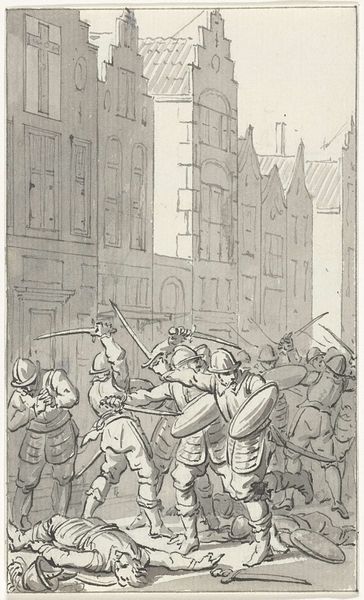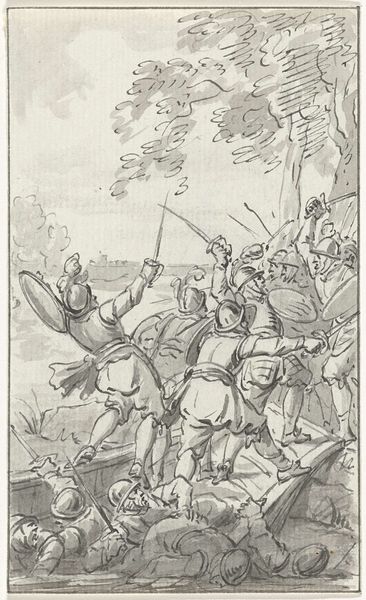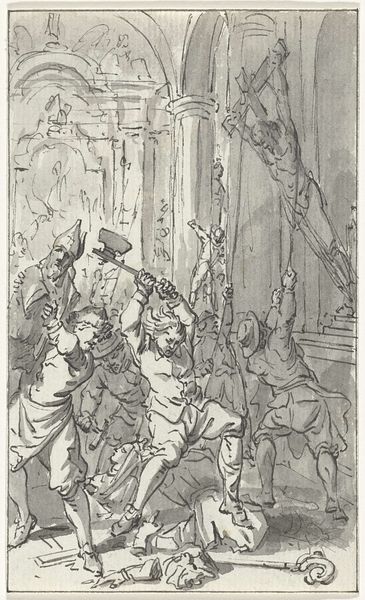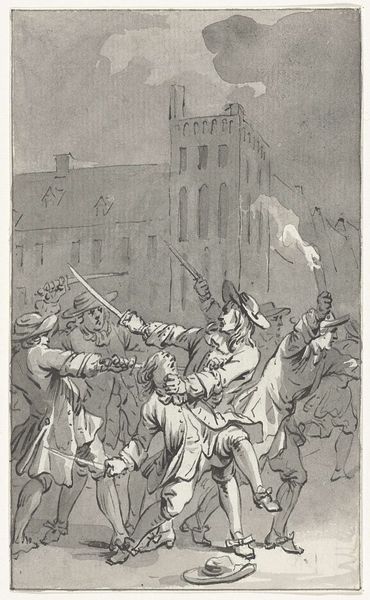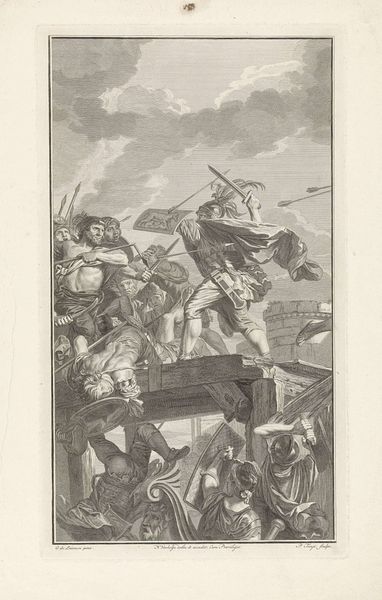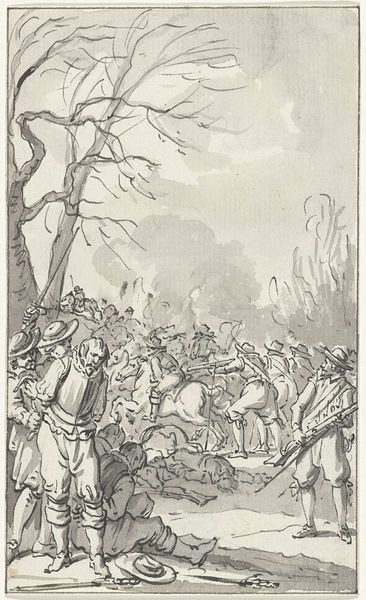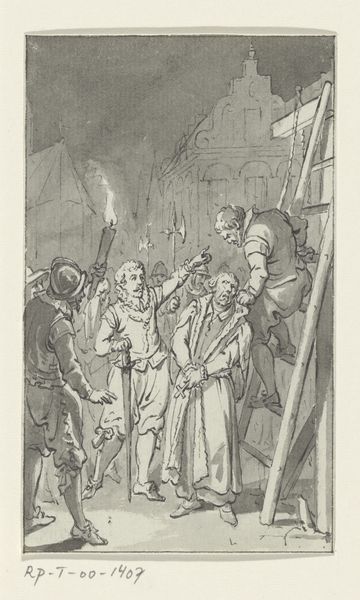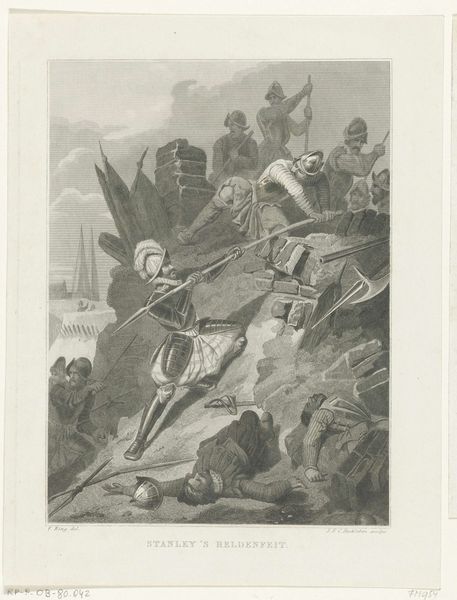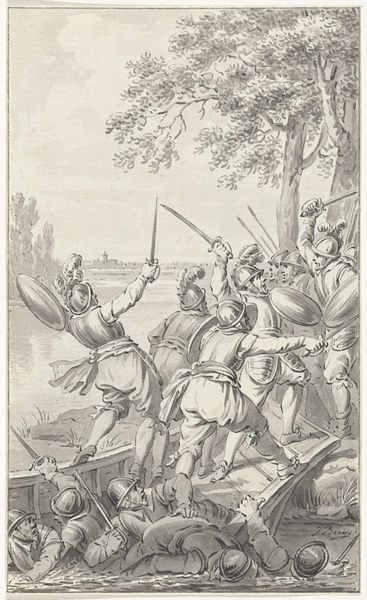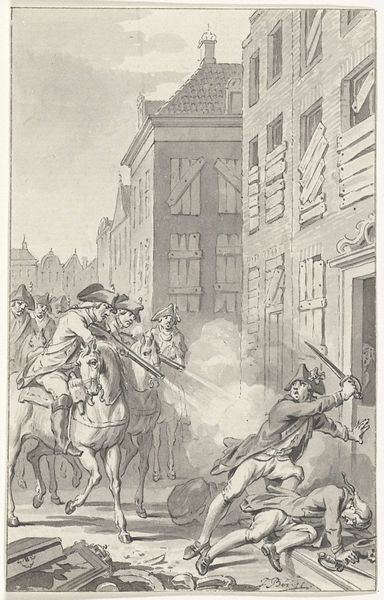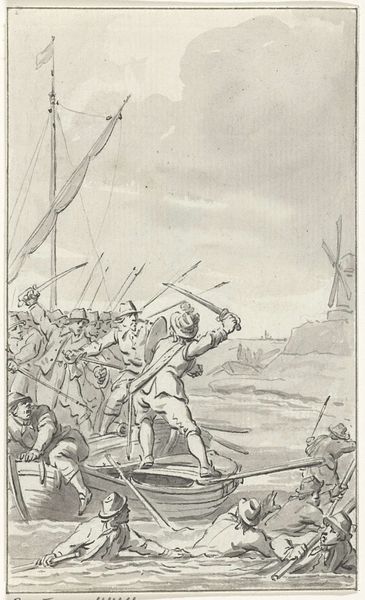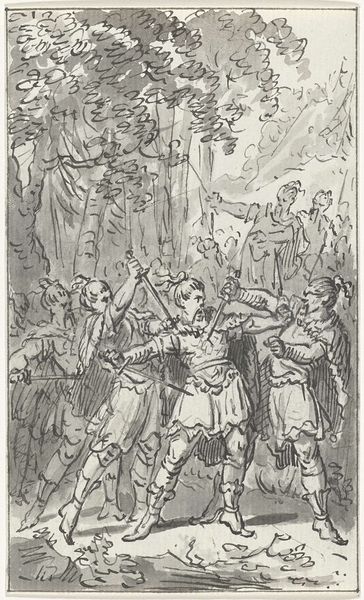
Het beeld van Erasmus te Rotterdam beschoten door de Spanjaarden, 1572 1789 - 1791
0:00
0:00
drawing, ink, pencil
#
drawing
#
narrative-art
#
pen illustration
#
figuration
#
form
#
ink
#
romanticism
#
pencil
#
line
#
history-painting
Dimensions: height 150 mm, width 90 mm
Copyright: Rijks Museum: Open Domain
Editor: Here we have Jacobus Buys’ drawing, "Het beeld van Erasmus te Rotterdam beschoten door de Spanjaarden, 1572," created between 1789 and 1791, using pencil, pen and ink. It feels almost like a quick news sketch – so immediate and dramatic! What can you tell me about the story behind this image and its materiality? Curator: What interests me is the relationship between the high-minded subject – Erasmus, intellectual par excellence – and the means by which Buys depicts this historical moment. He utilizes relatively common, easily accessible materials, right? Pencil, pen, ink – the tools of everyday communication, not necessarily of grand historical painting. Doesn't this choice democratize the narrative? Editor: That’s fascinating. I hadn’t considered the accessibility of the materials. It's like he's bringing this heroic narrative down to earth, suggesting everyone could engage with it. How does that relate to the depiction of violence? Curator: Think about the production of weapons depicted - the labor involved, the raw materials sourced. What is being consumed here, beyond ammunition? It's Erasmus, yes, but also a particular political ideology being violently imposed. Notice the detailed rendering of the muskets, versus the sketchier, almost ethereal portrayal of Erasmus. Does that signal anything about what Buys values - or perhaps fears? Editor: It makes you think about who had access to firearms, and how that affected power dynamics in 16th century Rotterdam. Buys is emphasizing something about power and violence beyond the central figure of Erasmus. It reframes what is usually presented as intellectual struggle within very tangible elements. Curator: Exactly. It pushes us to consider not just the grand narratives of history, but the messy, material realities of conflict and the labor and resources that fuel it. Ultimately, how these factors intertwine and reshape both memory, interpretation, and ideology over time. Editor: I see the artwork in a new light, thinking about the artist’s choices regarding material culture impacting this subject, which, until now, seemed merely historical. Thank you for making that connection clearer to me!
Comments
No comments
Be the first to comment and join the conversation on the ultimate creative platform.
